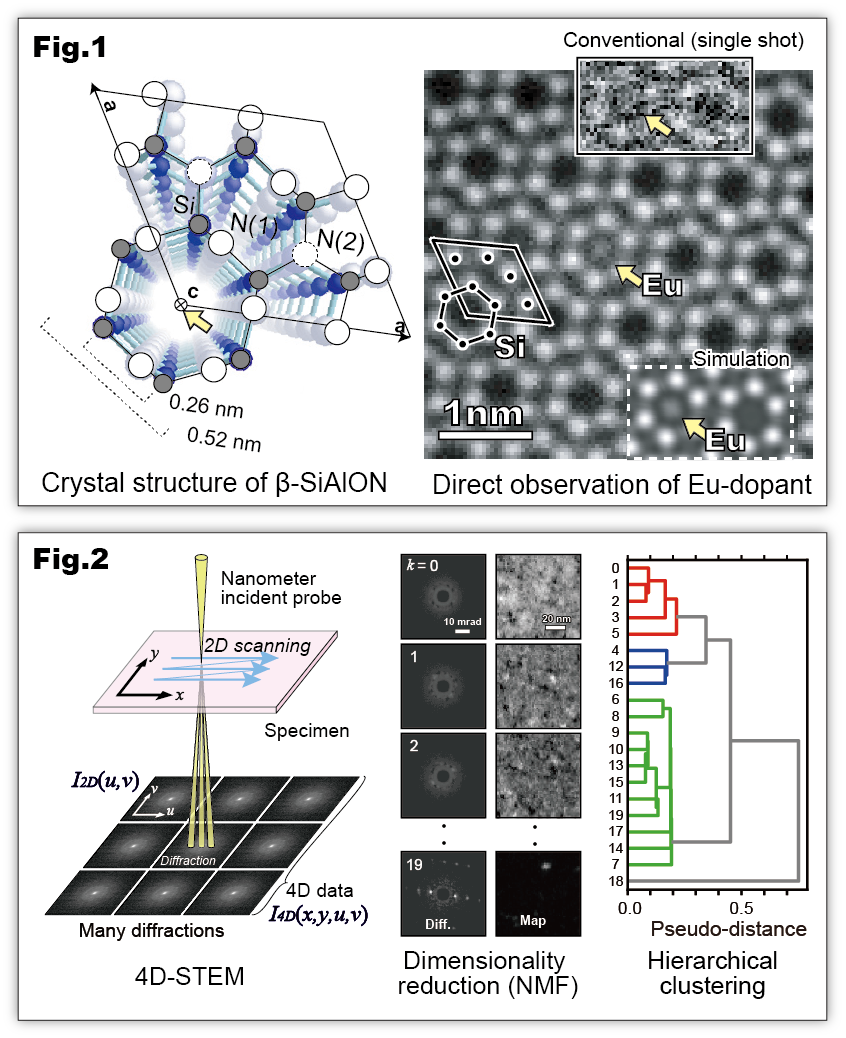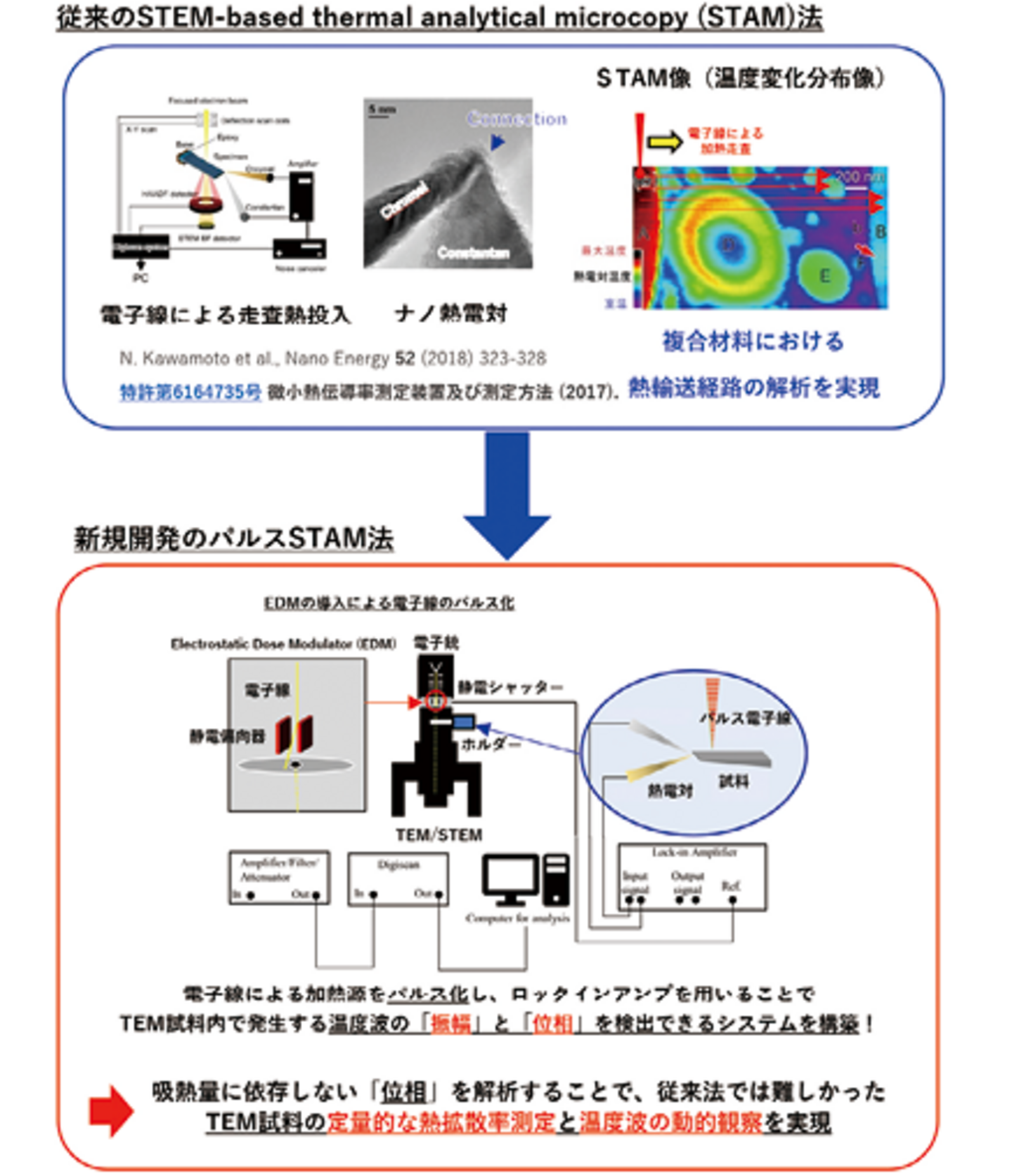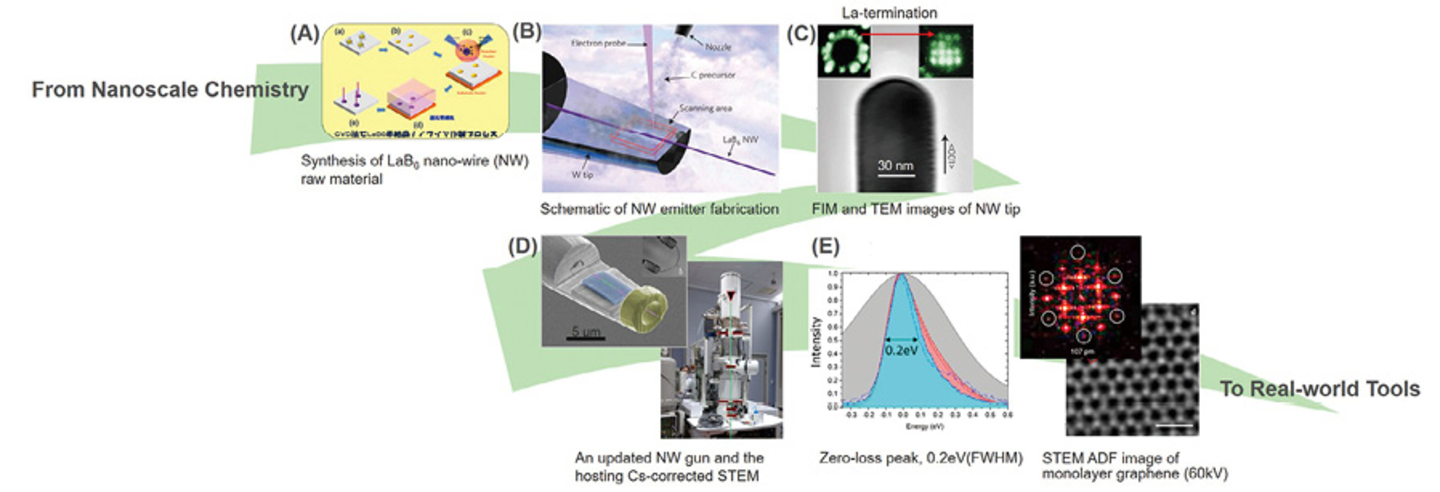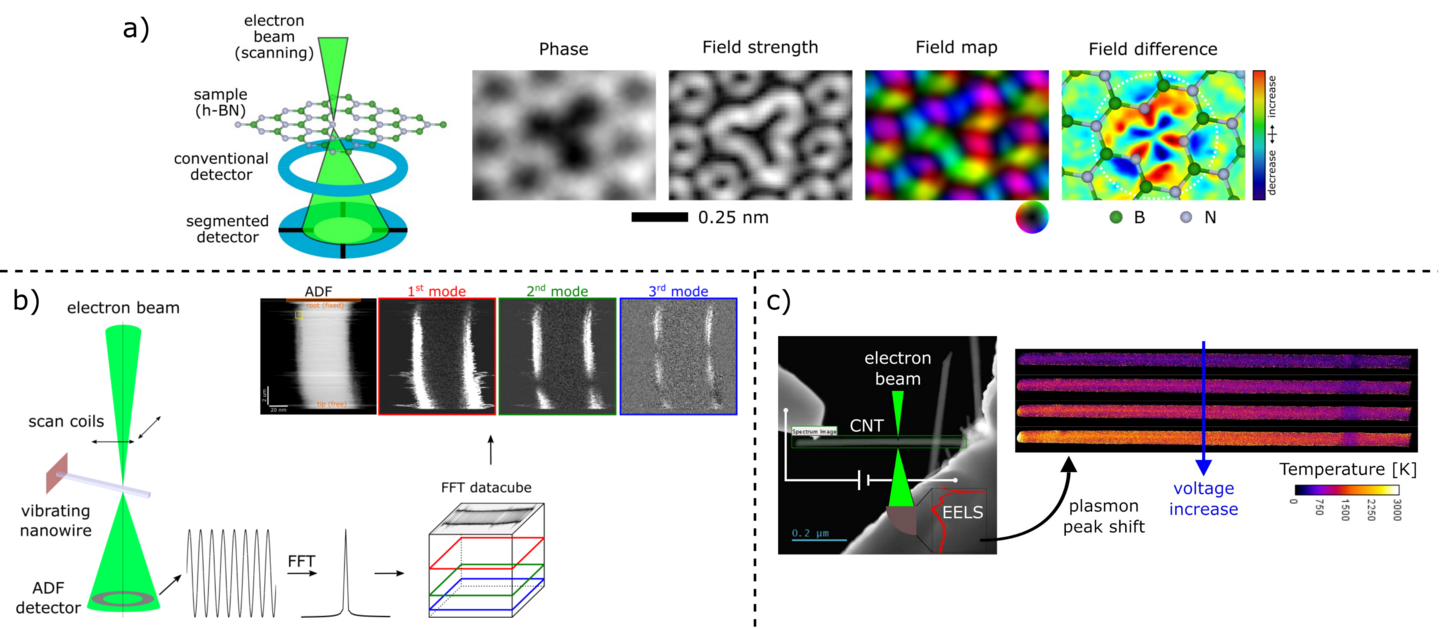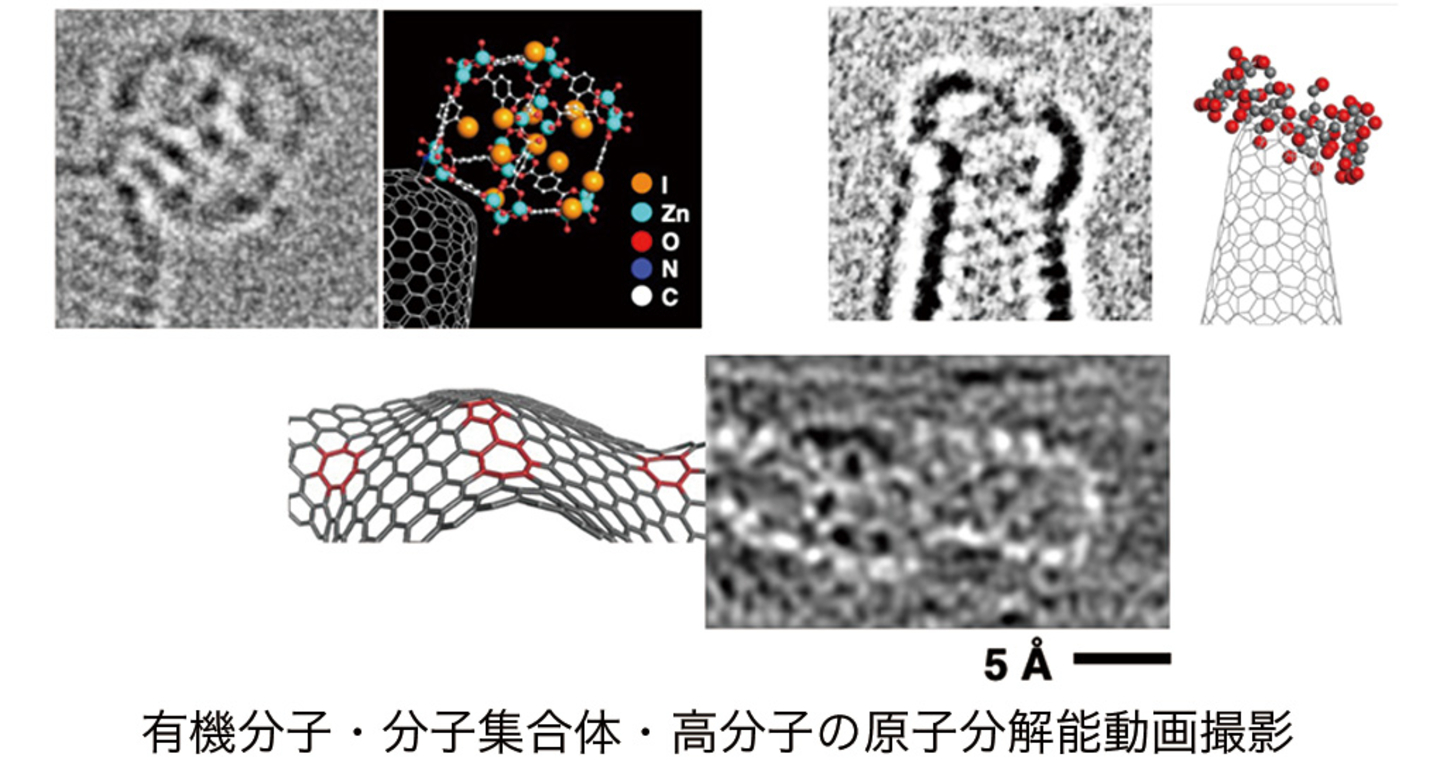 |
- In the electron microscopy observation of molecular materials such as molecular assemblies, organic and coordination compounds, and polymers, sample damage caused by electron beam irradiation has hindered high-resolution imaging. We are advancing "cinematic molecular science" by clarifying the structures of single molecules and molecular assemblies at atomic resolution, and by recording dynamic processes involving molecules—such as chemical reactions and structural transformations—in real-time video, using our uniquely developed sample preparation methods and high-speed electron microscopy video recording and analysis techniques. Furthermore, by leveraging the electron microscopy technologies cultivated in these studies, we are working on the development of functional molecular assembly materials, such as nanometer-thick films, based on an understanding of the hierarchical molecular assembly mechanisms in the nano- and meso-scale regions that bridge the molecular and macroscopic worlds.
|
